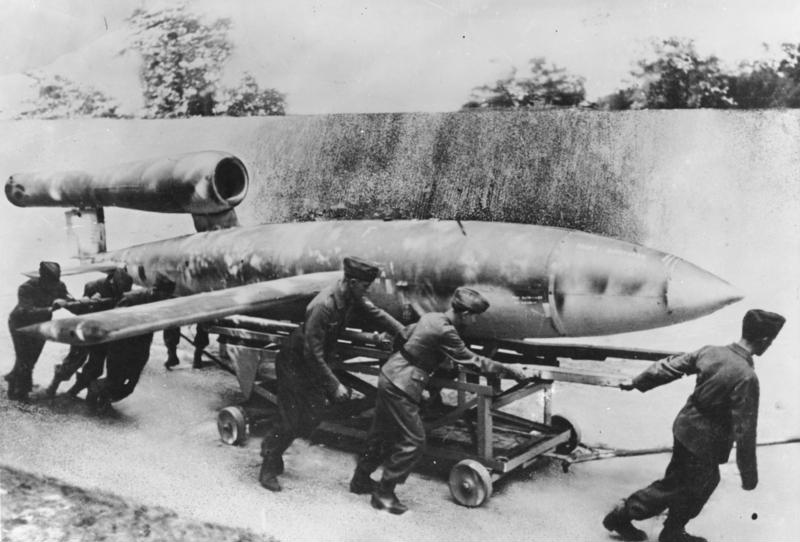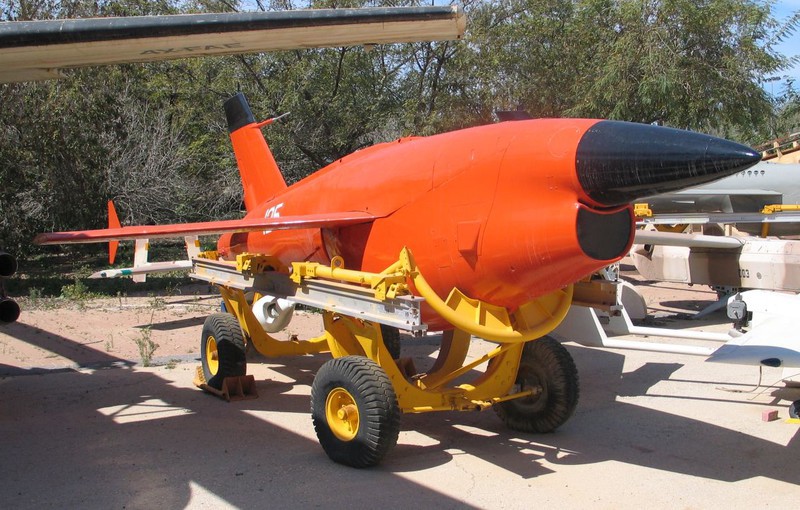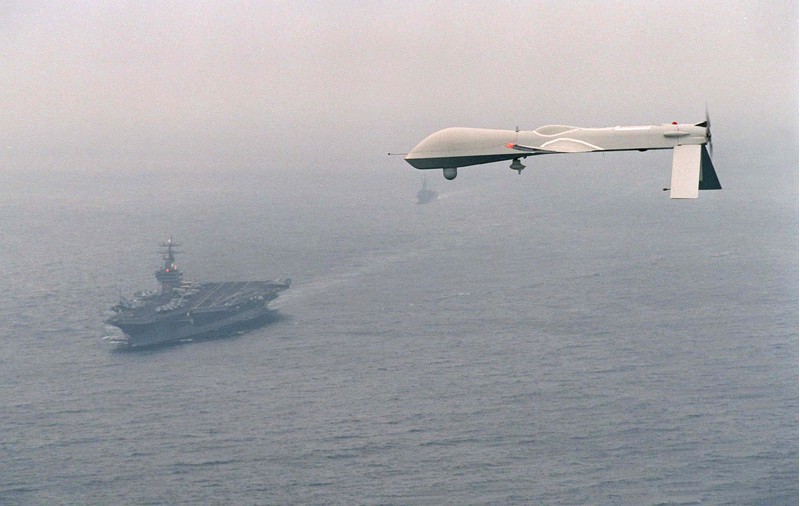

The tactician Sun Tzu didn’t have drones when he wrote The Art of War more than 2,000 years ago, but his work foreshadowed the capabilities these remote-controlled airplanes now offer. He wrote that:
“…to fight and conquer in all your battles is not supreme excellence; supreme excellence comes in breaking the enemy’s resistance without fighting.”
In other words, the best battle is the one that you don’t have to fight, because you win it without fighting at all.
This is a lesson that modern drone warriors should have written on a Post-it note above their monitors, because the key promise of military drones is exactly that: They allow you to find, attack, surveil, and kill without ever putting your own soldiers at risk. That being said, it’s not surprising that automatic and remote-controlled flying vehicles have a long and controversial history. And yet, while the technology behind drones has mainly been developed in a military context, it’s also having a significant impact on a huge number of other areas, from moon landings to parcel deliveries.

The camera drones you now see buzzing around the skies above sporting events have a lineage that can be traced back to the start of the 20th century.
The first drones were experimental models that were built onto existing planes following the rise of air warfare in World War I. The British Flying Corps experimented with adding remote-controlled devices to its airplanes after 1916, mainly for creating targets to train pilots. These experiments took a more lethal turn after the war in the 1920s, when engineer Elmer Sperry in the United States put a 300-pound bomb in a remote-controlled plane that had a range of over 50 miles. This “Airborne Torpedo,” as his invention was called, was never used in a war, but it did show that unmanned drones could, if necessary, deliver deadly cargo.
This lethal potential came into sharp focus near the end of World War II, with the German Luftwaffe’s development of the V1 and V2 rockets. The V1 “flying bomb” was a sophisticated weapon guided by a gyroscopic autopilot. Initially, it was was to be piloted with a radar-driven remote control that wouldn’t look out of place on modern drones. Its engineers eventually settled on an autopilot, though, because using it on cities rather than military targets required less precision, and the autopilot was cheaper to make and less prone to jamming. Meanwhile, some V1s distributed propaganda leaflets, their hovering presence often used in Nazi propaganda as an example of the regime’s technological superiority over its enemies.

The larger V2 was a much more sophisticated system–it used radar beams to guide itself to its targets, making it scarily accurate. However, the effectiveness of these missiles is disputed–they were a huge drain on the German economy. While they were more accurate than the V1, they were much more expensive to produce. As the head of the Allied forces’ Bomber Command, Sir Arthur Harris, later noted, Germany could have produced over 24,000 fighter aircraft for the price of the V2, a number that might have turned the tide of the war. The physicist Freeman Dyson also said that “from our point of view, the V2 program was almost as good as if Hitler had adopted a policy of unilateral disarmament.” Many have also related that the V2 killed more people during its production than when it was actually put to use. (Most of its parts were made by slave labor in subterranean factories that killed thousands of workers.)
After the war, the United States Army captured many of Germany’s missile experts and moved them stateside. These scientists and engineers (including, most notably, Wernher von Braun) became the core of the teams that worked on the American rockets that eventually landed men on the moon.
Alongside this, work on drones continued inside a dedicated branch of the newly formed U.S. Air Force (established in 1947) that handled unmanned aircraft. The first result of this research was a number of remote-controlled B-17 Flying Fortress planes that flew over nuclear tests in the Pacific, then landed under remote control to measure both the radiation level and the effect of nuclear explosions on aircraft in the area.

Research in the years that followed focused mainly on target drones–remote-controlled craft for training pilots with live weapons. However, the American military was also evaluating the potential of drones for surveillance. Systems like the Ryan Firebee were initially developed as target drones, but the Gary Powers incident (wherein a U2 spy plane was shot down over the Soviet Union and the pilot captured) and other similar problems convinced the United States and others that unmanned drones might do a better job.
This led to the development of the Firefly and Lightning Bug drones, which were used extensively in Vietnam. The U.S. Air Force flew more than 3,000 of these 25-foot-long drones during the whole of the Vietnam War–they took pictures over North Vietnam and China, helping pinpoint fast-moving North Vietnamese armed forces. They flew over their targets on autopilot, then circled back and landed by parachute in the sea to be recovered eventually. Helicopters snagged later models out of the air for even quicker recovery (and development of the photos they’d taken).
As the U.S. military realized the potential of these drone types, it developed a slew of variations–one low-flying model (the 147 NE) included a strobe light for taking pictures at night. It wasn’t that effective as a surveillance platform (because it could only photograph a small area, and the guidance system was not accurate enough to time the photos correctly), but it did have value as a psychological weapon. The combination of an almost-silent engine and a sudden bright light must have been a frightening reminder to the soldiers in North Vietnam that they were being watched from above.


By the end of the Vietnam War, drones had begun to fall out of favor as satellite surveillance became cheaper and more effective. But, in the late 1980s, they returned to fashon as military and intelligence agencies realized there were things that satellites couldn’t see. They could survey vast areas, sure, but they couldn’t hover over one area for a long period, or follow a specific target if it got into a car. Satellites couldn’t move around a target to view it from another angle, and even though they were fine for spotting tanks or nuclear missiles, they couldn’t see individuals or small groups of fighters (an increasingly important necessity in areas of conflict like the former Yugoslavia).
What was needed was a surveillance system that could be easily deployed, flown for a long time, and which didn’t cost too much. The answer was the Predator, which has become the poster boy for modern military drones.
The propellor-driven Predator soon became a common sight in the skies above conflict zones like Iraq and Afghanistan. Crucially, the advent of high-speed satellite connections late in the 1990s meant that their pilots could be anywhere–while the Predator was cruising above Iraq, its commander could be sitting behind a desk in a base in the United States.

Shortly before the 9/11 attacks on New York, the Predator drone underwent a significant modification: Hellfire missiles were added, which could be targeted and fired by a remote pilot. In effect, this meant that instead of just looking at a target, a Predator could now attack, using a laser to guide the missile to its target from several thousand feet up. The first in-theater drone attack of this kind took place in October of 2001 in Afghanistan, and drone attacks have now become one of the most infamous–and controversial–tools of American military force.

Like most military technology, drones now appear in our everyday lives. These days, ones like the Predator are used for patrolling the U.S.-Mexico border and measuring hurricanes as they form to better predict their behavior. The smaller descendents of the Predator are also performing scientific research, such as surveying Orca whale populations in the Pacific. Scientists have said that the small hexacopter–a helicopter with six propellors–was able to help “fill key scientific data gaps about free ranging whales” without disturbing them. In fact, the scientists don’t think the whales even noticed the hexacopter flying above them, a feat that they could never have managed with a noisy boat.
Amazon has disclosed plans to deliver packages by drone, as has the Swiss Post Office (although it must be said that we’re still several years away from drones reliable enough to handle fragile goods). The World Health Organization is also experimenting with them as a way to deliver medical supplies to distant parts of Bhutan. While military drones remain controversial, their civilian descendents are becoming more widespread, providing new ways to gather information and deliver less lethal payloads.
The drone has radically changed the way that modern military forces think about waging war. From their humble beginnings as training targets and disposable surveillance devices, drones have now become frontline forces, taking an active role in conflicts by carrying missiles into places too dangerous for conventional aircraft. Their range and ability to linger much longer than any human pilot means they can go farther, longer, and quieter. When the only thing at risk is a drone that can be quickly replaced, tacticians can take more risks and surveil areas that would previously have been impossible, quickly striking if they identify a target. As Sun Tzu himself said: “Let your plans be dark and impenetrable as night, and when you move, fall like a Thunderbolt.”


How We Get To Next was a magazine that explored the future of science, technology, and culture from 2014 to 2019. This article is part of our Histories of”¦ section, which looks at stories of innovation from the past. Click the logo to read more.
